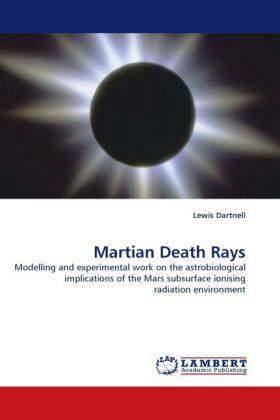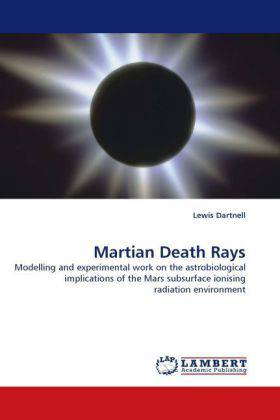
- Afhalen na 1 uur in een winkel met voorraad
- Gratis thuislevering in België vanaf € 30
- Ruim aanbod met 7 miljoen producten
- Afhalen na 1 uur in een winkel met voorraad
- Gratis thuislevering in België vanaf € 30
- Ruim aanbod met 7 miljoen producten
Zoeken
Martian Death Rays
Modelling and experimental work on the astrobiological implications of the Mars subsurface ionising radiation environment
Lewis Dartnell
Paperback | Engels
€ 48,45
+ 96 punten
Omschrijving
Any microbial life extant in the top meters of the martian subsurface is likely to be held dormant for long periods of time by the current permafrost conditions. In this potential habitable zone, a major environmental hazard is the ionising radiation field generated by the flux of exogenous energetic particles: solar energetic protons and galactic cosmic rays. The research reported here constitutes the first multidisciplinary approach to assessing the astrobiological impact of this radiation on Mars. A sophisticated computer model has been constructed to characterise this complex subsurface ionising radiation field and explore the influence of variation in crucial parameters such as atmospheric density, surface composition, and primary radiation spectra. Microbiological work has also been conducted to isolate novel cold-tolerant bacterial strains from the Dry Valleys environment of Antarctica, an analogue site to the martian surface, and determine their phylogenetic diversity and survival under high-dose gamma-ray exposure frozen at -80°C, a temperature characteristic of the martian mid-latitude permafrost.
Specificaties
Betrokkenen
- Auteur(s):
- Uitgeverij:
Inhoud
- Aantal bladzijden:
- 200
- Taal:
- Engels
Eigenschappen
- Productcode (EAN):
- 9783838343006
- Verschijningsdatum:
- 23/05/2010
- Uitvoering:
- Paperback
- Formaat:
- Trade paperback (VS)
- Afmetingen:
- 152 mm x 229 mm
- Gewicht:
- 299 g

Alleen bij Standaard Boekhandel
+ 96 punten op je klantenkaart van Standaard Boekhandel
Beoordelingen
We publiceren alleen reviews die voldoen aan de voorwaarden voor reviews. Bekijk onze voorwaarden voor reviews.











